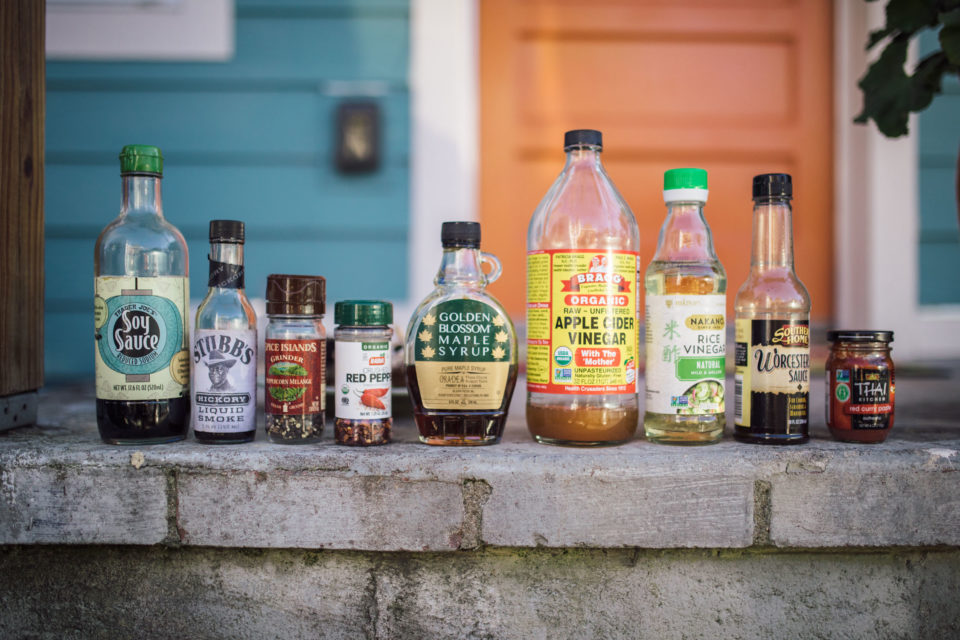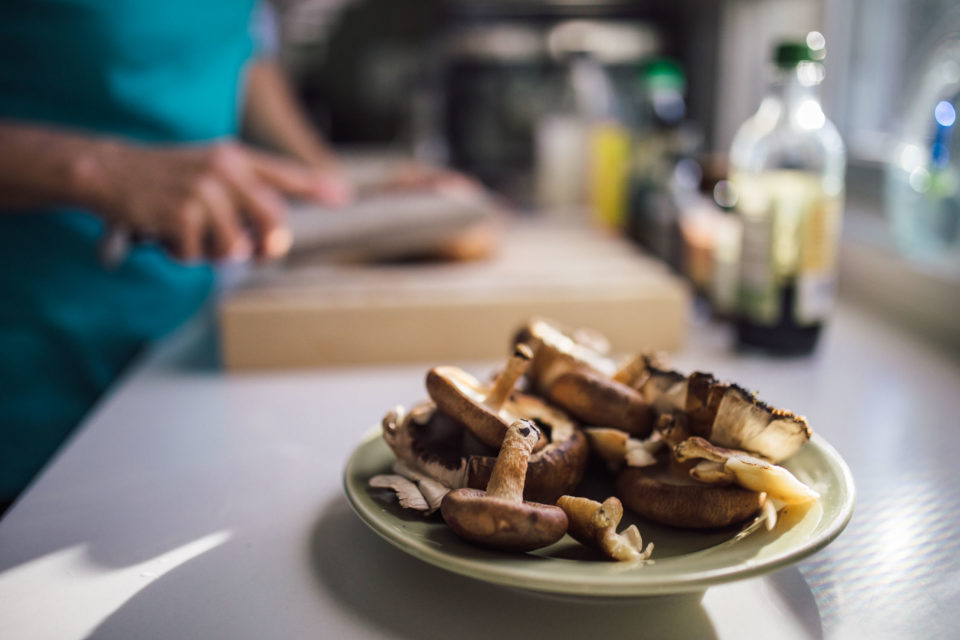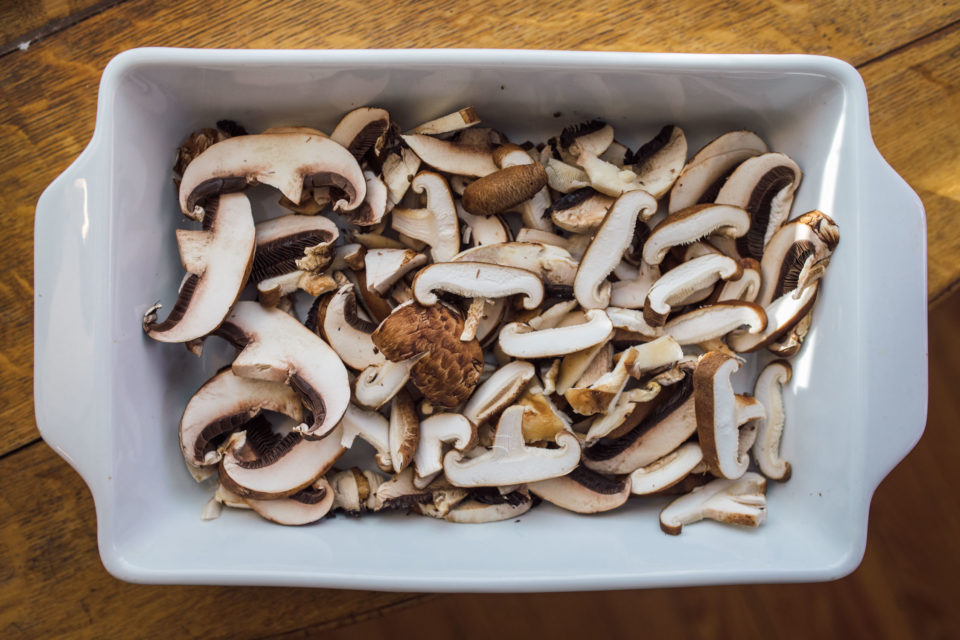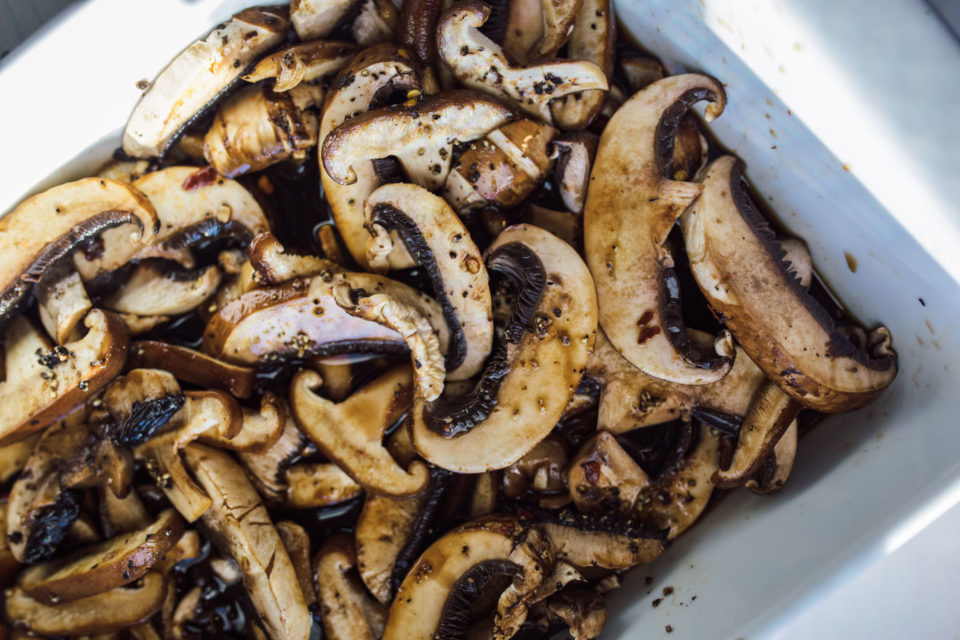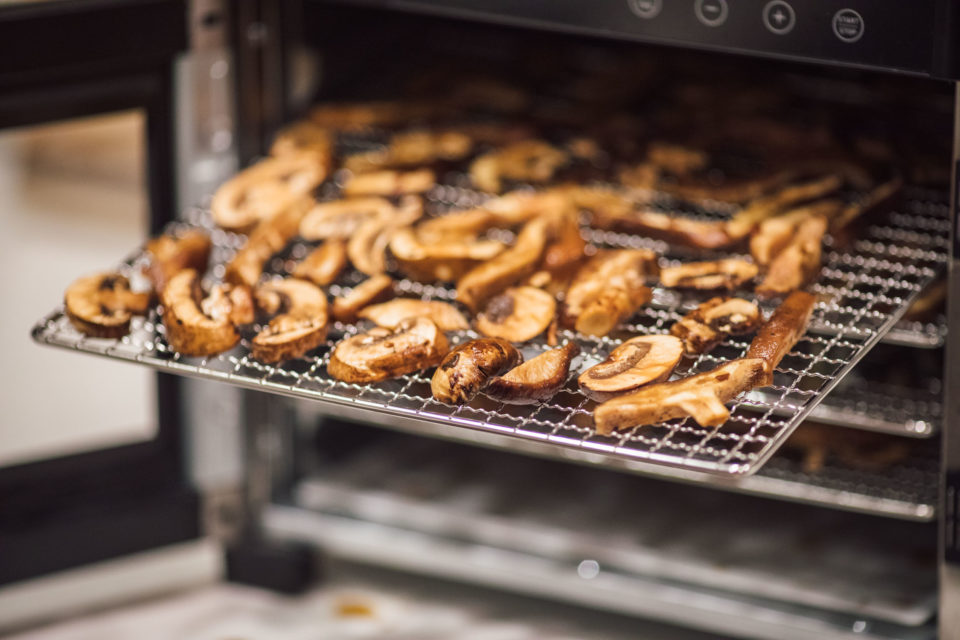Mushroom Jerky Recipe (Jerkless Jerky)
Virginia turns to the magical kingdom of fungi to satiate her jerky cravings for our latest bikepacking recipe. Find the full ingredients list and recipe in this step-by-step guide to making your own mushroom jerky here…
My love of jerky started at a young age. Our local mall had a store that sold leather-hard slabs of beef jerky, displayed temptingly in a large glass jar. It was the kind of tough that would make me worry about tooth loss today, and was salty, with just the right amount of crushed red pepper. It was amazing.
I stopped eating cows in my mid-teenage years and never thought too much about its absence. Occasionally the smell of burgers cooking on the grill would tempt me, but Morningstar Farms and Boca burgers were satisfying enough to curb those cravings. Then, on a bikepacking trip through southern Africa I was broken. I like to blame that weakness on my body’s increased demands for protein, but when I’m being honest with myself, I know that it was really all about the jerky. Biltong to be specific.
Biltong is much like jerky, the only significant difference being that it’s completely air dried, versus being heat cured. South African biltong is a delicacy… thinly sliced, flavorful, and tender. During the month that I cycled the country, biltong was my favorite fuel, which is saying a lot in a place where the most incredible fruits can be found everywhere, picked right off the trees.
While I still get a hankering for beef jerky on occasion (my mouth still waters when I think about the biltong), my conscious usually prevails, and I abstain. When I do indulge, it’s on jerky made from pasture-raised, grass-fed cows, and its cost is pretty prohibitive. So, what’s a girl with a love of jerky, a moral objection to the mass production and mistreatment of animals, and a budget to do? For that answer, I turned to the magical kingdom of Fungi. I know what you’re thinking, and, no, I didn’t find mystical meat-replacement guidance from a mushroom; I just turned them into jerky.
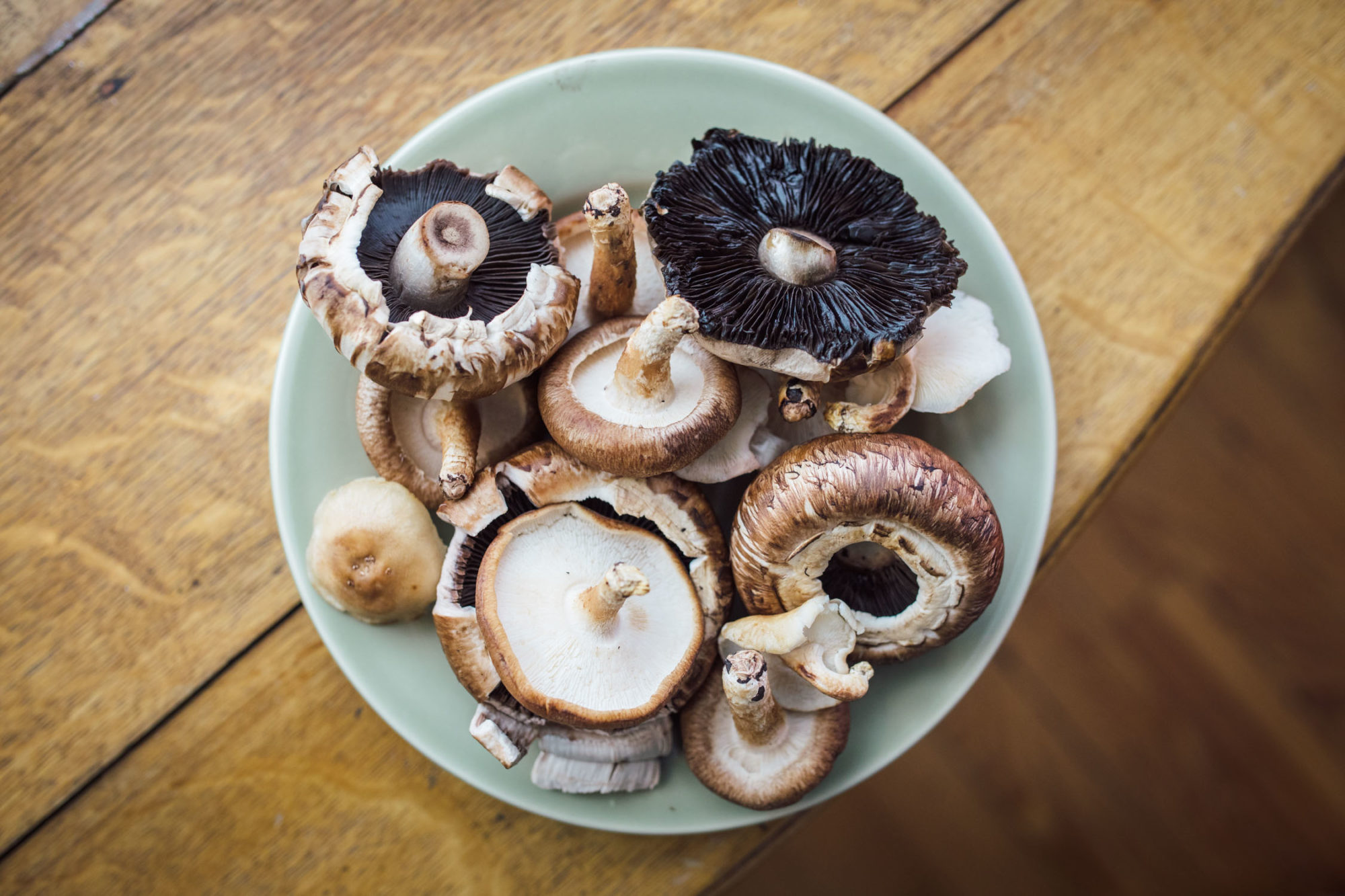
Portabella mushrooms have long been used as meat substitutes, most often in the form of burgers or steak. They have an earthy flavor, but they are also highly absorbent. This absorbency makes them highly versatile vehicles for flavorful marinades. Their firm texture also provides a satisfying chew. What’s more, portabella mushrooms are a great source of B vitamins, namely niacin and pantothenic acid, and are high in antioxidants like selenium and glutathione. They are also a decent source of fiber and the only naturally occurring vegan source of vitamin D.
I think this jerky pretty much nails the flavors of the “traditional” peppered jerky that I loved as a kid. It’s savory with just the right amount of heat for my taste. While it’s not terribly spicy, those who are averse to any heat should tread lightly with the crushed black and red pepper. What’s really great is that this recipe can be easily adapted. If you prefer a sweeter jerky, try adding more maple syrup or dissolve a little sugar into the marinade. If you like spicy food, add some more cracked pepper, some Sriracha, or even cayenne. And, for a jerky with Asian (Korean or Chinese) flavors, try adding sesame oil and a little powdered ginger.

To dry the jerky, I used my COSORI Premium Food Dehydrator. I imagine that an oven set on its lowest temperature would work, but I haven’t tested out that method personally. I dried the mushrooms at 120°F (49°C) for about 2-3 hours. After around an hour and a half, try a piece to see if it’s to your liking. Continue dehydrating and checking the jerky’s texture every 20-30 minutes until it’s reached the desired texture. Note: I once left my jerky in the dehydrator for too long and the result was crispy, more like a mushroom chip than chewy jerky.
So, without further ado, here’s the recipe. I hope you enjoy it.
Portabella Pepper Jerky
Mushroom Jerky Ingredients
Conversions listed are approximations.
- Mushrooms: Approximately 1 pound (450 grams) portabella mushrooms, sliced about ½ inch (13mm) thick
- Reduced Sodium Soy Sauce: ⅓ cup (80 mL) reduced sodium or regular soy sauce
- Worcestershire Sauce: ¼ cup (60 mL) Worcestershire or vegan Worcestershire sauce
- Apple cider vinegar: 2 Tbsp (30 mL) apple cider vinegar
- Rice Vinegar: 2 Tbsp (30 mL) rice vinegar
- Maple Syrup: 1 Tbsp (15 mL) maple syrup
- Black pepper: 1 ¼ – 1 ½ tsp (6-7 grams) freshly ground black pepper
- Crushed Red Pepper: 1 tsp (5 grams) crushed red pepper flakes
- Liquid Smoke: ¼ tsp (1.25 mL) Liquid Smoke
- Red Curry Paste: ½ tsp (2.5 grams) red curry paste
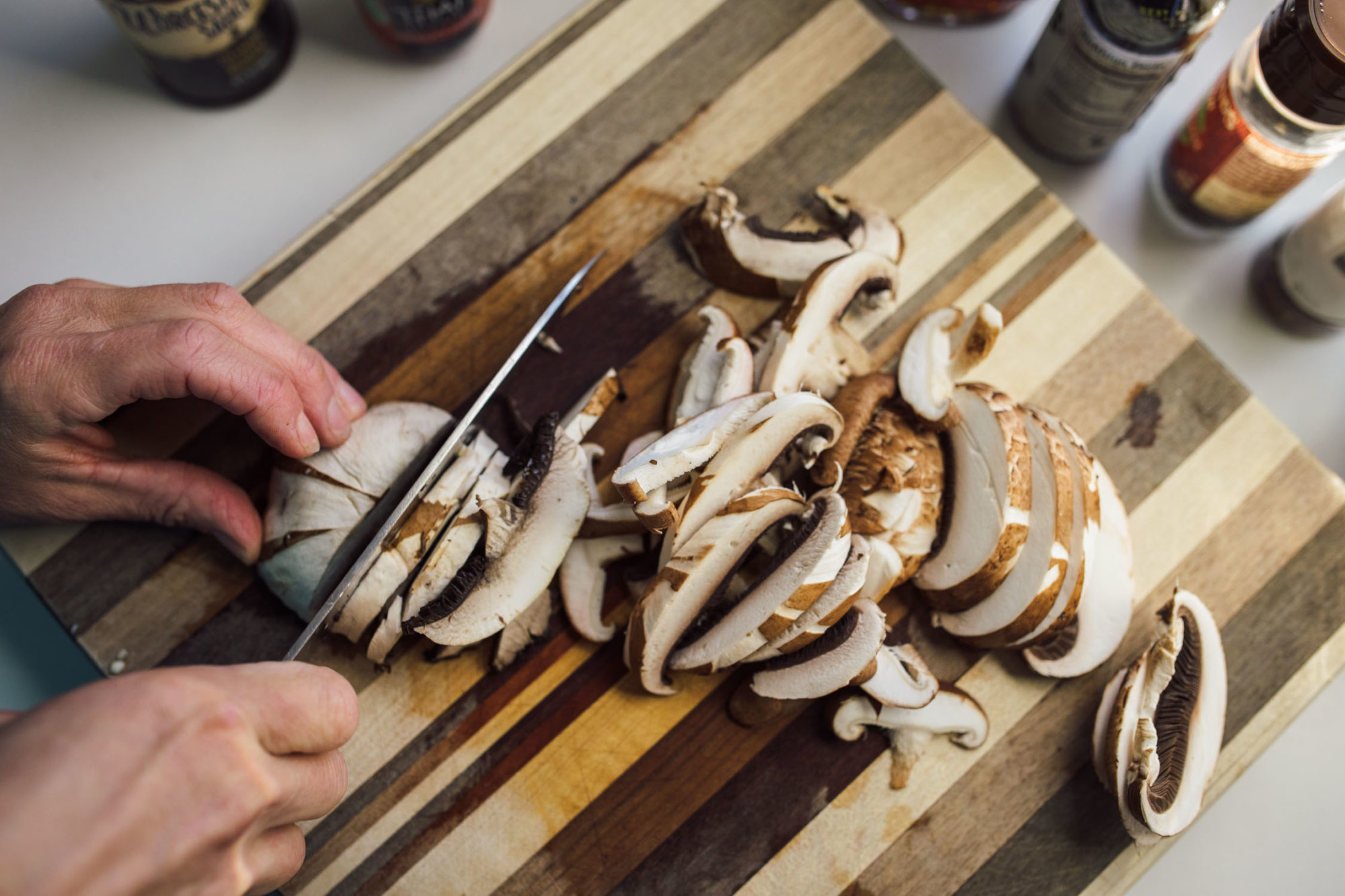
Step 1. Clean and slice mushrooms. The best way to clean mushrooms is to simply wipe their surface with a damp towel. If you must wash them with water, do not submerge them, and dry them very thoroughly before marinating. The mushrooms will absorb water from washing, which will limit how much marinade they can absorb.
Step 2. Mix the remaining ingredients in a bowl.
Step 3. Arrange the sliced mushrooms in a large cake pan or casserole dish. You want to get them in a single layer if possible. Two layers is not a problem. They will just require more attention (turning) during the soaking time.
Step 4. Pour the marinade over the sliced mushrooms and cover the dish.
Step 5. Refrigerate.
Step 6. Marinade (soak) the mushrooms for 8-12 hours, turning occasionally if you have multiple layers.
Step 7. Remove mushrooms from refrigerator and place them on oven/dehydrator sheets. For optimal consistency in drying time and texture, the mushrooms should not be touching each other.
Step 8. Place sheets in dehydrator. Set dehydrator to 140°F (60°C). If using a standard oven, use the lowest temperature setting possible.
Step 9. After approximately 3 ½ hours (sooner with the oven technique), start checking the jerky to see if it has reached your desired consistency. I prefer it leathery hard, but not crispy, which takes between 4 and 4 ½ hours in the dehydrator.
Step 10. Return the jerky to the dehydrator if needed, checking its consistency every 30 minutes.
Step 11. Store jerky in an airtight container.
Any remaining marinade can be reserved, stored in the refrigerator, and used for another batch of jerky.
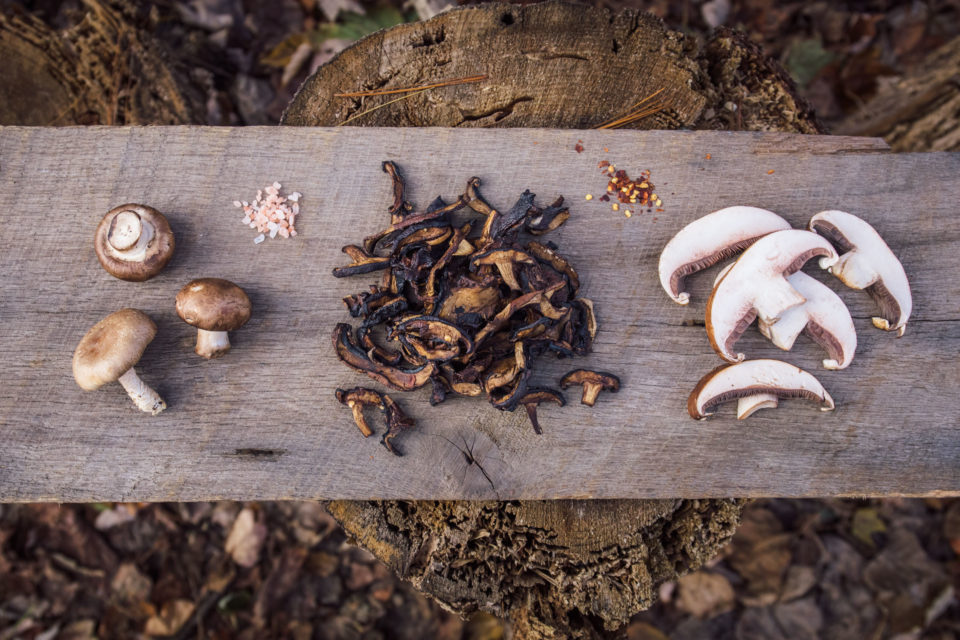
Megan Ware, R. D. N. (2019, November 6). Mushrooms: Nutritional value and health benefits. Retrieved January 6, 2020, from https://www.medicalnewstoday.com/articles/278858.php#benefits.
Rabin, R. C. (2018, January 19). What Is the Health and Nutritional Value of Mushrooms? Retrieved January 6, 2020, from https://www.nytimes.com/2018/01/19/well/eat/what-is-the-health-and-nutritional-value-of-mushrooms.html.
Please keep the conversation civil, constructive, and inclusive, or your comment will be removed.











